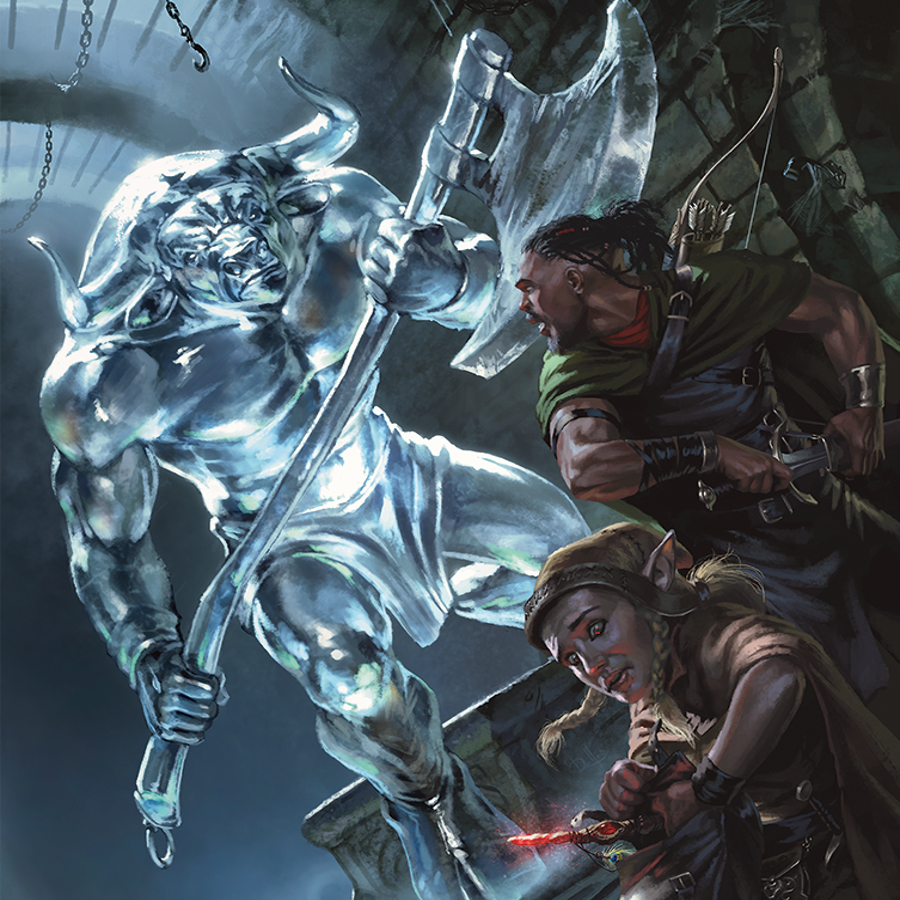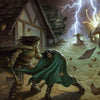3 Ways to Handle D&D's Game Breaking Exploits

Written by Luke Hart
The awesome thing about D&D, Pathfinder, and other tabletop RPGs is that, through creativity and brain power, players can do amazing things and overcome incredible obstacles. On the other hand, the frustrating thing about D&D, Pathfinder, and other tabletop RPGs is that, through creativity and brain power, players can break your game and derail game balance.
So, today, we’ll go over the 3 steps game masters should take when players find creative ways to use game mechanics in ways that perhaps were never intended by game designers—we call those exploits, by the way—or that at the very least de facto break the game, making it sometimes nearly unplayable.
Watch or listen to the video below.
#1 Read the Rules
Holy crap, I cannot tell you how many times I have had a player who tells me that they have X ability of Y spell that allows them to do Z thing. Then, when I look it up in the book, the rules clearly state that it can do no such thing!
Case in point, I once had a player who wanted to use his monk’s Shadow Step ability to teleport to a point some 30 feet away behind a closed door. I asked him, “Don’t you have to be able to see where you are teleporting?” “Nope, not at all!” he answered. So then, I paused the game for 30 seconds, looked up the ability, and it literally stated, “To an unoccupied space you can see” in the description. Then he was like, “Oh, I missed that.”
That example may not be particularly game-breaking, but here’s another one I heard about. A player was using the enlarge/reduce spell on enemy weapons and armor. They would enlarge an enemy’s full plate armor, which multiplies the weight of the armor by 8. This turns 65 lbs. armor into 520 lbs., effectively pinning the bad guy in place and taking him out of the fight—with no saving throw, I might add! Or, they would enlarge or reduce an enemy’s weapon, making it unwieldy in combat or reducing its damage.
Now, imagine using this on a boss; that could make a huge difference in outcomes. However, when we look the spell up, the second sentence in the spell description reads, “Choose either a creature or an object that is neither worn nor carried.” You see when you are targeting an object, it cannot be worn—such as the enemy’s armor—or carried—such as an enemy’s weapon.
My point is this: often, the exploits that folks try to use aren’t really exploits. They are actually misunderstandings based on an improper or hasty reading of the rules or straight-up ignoring parts of the rules. So, when a player is doing something that appears extremely overpowered or game-breaking, the first step is to read the rules carefully since, many times, the solution is found therein.
#2 Give It a Shot Before You Ban It
Sometimes, players will come to you seeking to do a thing, and your first impulse as a game master will be, “Gee, that sounds really powerful. Maybe I shouldn’t allow this.”
For instance, a player in my Ancient Dragon game—the D&D 5e game I run for a group of my patrons—plays a cleric named Cassim. Well, they had just gotten to level 16, and he wanted to summon a Coutl with a spell and then use planar binding, another spell, to bind that Coutl so he would no longer have to concentrate on the summoning spell. It also greatly extended the length of time the creature could be with the party.
After carefully reading the spell descriptions, I felt that doing what he wanted was certainly within the bounds of what the spells allowed. However, my gut instinct was that it might be a bit too powerful. I mean, it would be a permanent summons, and if you look at Coutls, they are no chumps. They are immune to non-magical damage, have several very useful spells at their disposal, and have the ability to fly. That would be a very useful summons to have around without having to concentrate on it.
And yet, I resisted my gut instinct to say “no” and instead told my player that I would allow it on a provisional basis and that if it turned out to be unbalancing, we’d have a discussion at that point. After playing with that Coutl summons for some time now, I’ve determined that it has caused no issues. Is it powerful and handy to have around? Yep, it sure is. But the group is also level 16, and I am throwing some really nasty enemies at them at this point . . . so they also kind of need the extra help.
However, things might go the opposite way. My friend Trevor once had a paladin-sorcerer character in full plate armor who could cast shield. And guess what I did? I allowed him to also have a cloak of displacement. Yeah, that was perhaps a mistake. He got his armor class so stinking high that when an enemy was also attacking with disadvantage, they had practically no chance of hitting him. So, in that case, I learned that 1) disadvantage at the extremes is incredibly powerful and 2) the cloak of displacement needed some special considerations and a house rule to reduce its power—that, or I just wouldn’t use it in my games.
My point is that before you nerf or ban something, try it out first. Sometimes, the game designers do actually know what they are doing, and then sometimes there are oversights. But you may not know which is which until you try it out. Make sure you try it for long enough to really get a feel for whether it is overpowered or not. Sometimes, it may only take one game session; sometimes, it will take several adventures. It depends on the thing in question.
#3 Create a House Rule
Once you have carefully read the rules and tried them out in the game, if it becomes clear that something is way too OP and/or game-breaking, it’s time to make a house rule as a game master. You have two main goals here: first, balance the game mechanic, and second, ideally, get your players’ buy-in and blessing on the house rule.
Balancing the game mechanic is hard to give specific advice on because it will depend heavily on the nature of the issue. You will have to rely on your experience a bit. However, I can give you some general guidelines.
First, use comparisons. For instance, if I feel a magic item may be too powerful, I’ll compare it to those with similar properties. I’ll do the same for spells. If I think a class or sub-class may be too powerful, I’ll compare it to a class I use as my baseline. In D&D 5e, my baseline is the paladin. If a new class isn’t as powerful as the paladin, it’s probably OK because paladins are powerhouses.
Next, before you outright ban something, see if there is a way to adjust and make it less powerful but still useful. That isn’t always possible, so it leaves you to just not allow it in your game. Remember, you’re the game master; it’s 100% within your right to do that.
That said, as much as you have the right to change things and/or ban them, it is far better to work with your players when doing so. For me, this usually involves a conversation at the game table where we all discuss the thing that seems too powerful and what we think we could do to improve it. Then, after we discuss it and weigh options, I’ll make my final ruling on the matter. When I do so, I try as much as possible to make a decision that my players are OK with. Sometimes that isn’t always possible, of course, but do the best you can.
Finally, make sure you document the house rule for later reference. Ideally, this will be somewhere all players can see it. This helps not only for ongoing reference but also when you onboard a new player to your group. You can send them a link to the house rules that the group uses.
Is Being a Dungeon Master Sometimes Overwhelming?
When I was a new dungeon master, I know I was overwhelmed by everything I needed to do: learn the rules, create the adventures, run the game, handle problem players—it was A LOT! Even as a veteran DM, it’s still a lot. You might even feel that way yourself.
If you’re looking for loads of 5e adventures that you can prep in under 30 minutes or elements such as traps, puzzles, and encounters that you can drag and drop into your game at a moment’s notice, we have you covered!
With Lairs & Legends and Loot & Lore, you’ll get over 700 pages of 5e resources:
- Twenty-nine 5e adventures spanning levels 1 to 15 and designed for groups of 4 to 6 players.
- Over 100 new creatures from CR 0 to CR 24.
- Adventure Ideas
- Encounters with Full-Color and Blackline Digital Maps
- Patrons & Factions
- Magic Items
- NPCs
- Puzzles
- Random Encounter Tables
- Random Tables
- Spells
- Subclasses
- Traps
- Villains
-
Posted in
Game Master How-To Articles







